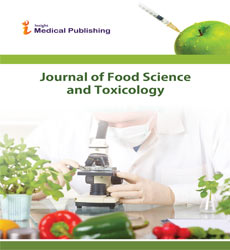Study the interaction of amino acids/sugars on the formation of acrylamide in potato models
Abstract
Over the years, researchers shed light on acrylamide safety in humans due to its potential neurotoxicity and probable carcinogenicity (Hariri et al., 2015). Consequently, it is essential to identify the amount of acrylamide in food and to reduce its concentrations in commonly consumed food (Huang et al., 2018). Many studies have shown that, at high temperature exceeding 120°C, low water activity and depending on the type of cooking, acrylamide is produced via the Maillard reaction in foods (Capuano & Fogliano, 2016; Stadler et al., 2002). According to FAO & WHO, (2006), French fries, breakfast cereals, toast, cookies, soft bread and coffee are the main sources of acrylamide in the diet of adolescents. Acrylamide formation in heated food necessitates the presence of precursors like sugars and free amino acids mainly asparagine. Moreover, acrylamide can also be formed from acrolein in fatty food (Yasuhara et al., 2003). Given the fact that potatoes and potato-based products are commonly consumed worldwide and are relatively high in acrylamide, this urged scientists to study the factors contributing to the increase in acrylamide formation after frying. Many factors affect the presence of acrylamide in potatoes such as the potato cultivars, the way of storing potato tubers and the cooking temperature and technique (De Wilde et al., 2006; Pedreschi et al., 2005; Romani et al., 2008). According to Mesias et al., (2018), 45.2% of samples taken from fried potatoes presented higher acrylamide concentrations as compared to the standard benchmark for French fries (740.33 μg.kg-1), and this finding is correlated to the high content of acrylamide precursors mainly free asparagine (Mousavi Khaneghah et al., 2020). Yang et al., (2016) showed that when frying temperatures increased, acrylamide formation increased, but unlike behavior was noticed among the potato cultivars. Another study showed that acrylamide concentration in baked potato chips at 170°C was higher by 2-fold as compared to chips fried at the same temperature; whereas acrylamide levels obtained from baking chips at 180°C and 190°C were lower than the fried ones (Palazo et al., 2010).
Open Access Journals
- Aquaculture & Veterinary Science
- Chemistry & Chemical Sciences
- Clinical Sciences
- Engineering
- General Science
- Genetics & Molecular Biology
- Health Care & Nursing
- Immunology & Microbiology
- Materials Science
- Mathematics & Physics
- Medical Sciences
- Neurology & Psychiatry
- Oncology & Cancer Science
- Pharmaceutical Sciences
